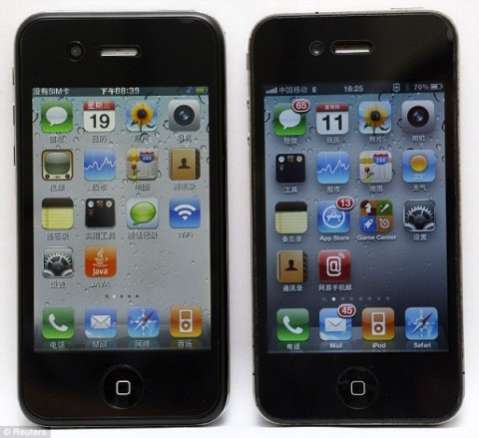THE growth of telecommunications has made life easier for people across the globe.
In Zambia, the mobile phone is the most popular telecommunication technology which is not only used to make calls but also has useful functions such as chat messaging, internet browsing, and video phoning among others.
However, the rise in demand for mobile phones has led to the rise in the manufacture of counterfeit handsets.
Counterfeit handsets are normally purchased by people who are ignorant about the low quality of components used in their manufacture, the effect they have on the health of users and on the environment.
With features similar to those of original phones, fake handsets have been made even more attractive with unusual functions such as dual Subscriber Identity Module (SIM) and analogue television.
In addition to the attractive unusual features, the fake phones are also affordable and can be bought even on the streets of any town in Zambia.
With increased access, the majority of Zambians have procured cheap expensive looking phones.
In rural areas; communities are ignorant about the effects of fake phones and are only interested in communicating with their friends and relatives irrespective of their location.
Grace Zimba of chief Mafuta’s area in Chipata District said that availability of affordable mobile phones has increased access among communities.
Ms Zimba said the source and the quality of the phone is not important as long as one is able to communicate.
Ms Zimba has been using fake phones for five years; though her experience with such phones has not been pleasant.
The phone dealers even mention to customers whether phones are original or fake but customers opt to go for the cheap fake ones.
She said even if she is not a health expert, she strongly feel the effect of using a fake gadget affects her ears.
Ms Zimba claimed that she feel pain on her ear after using the fake gadgets for over five minutes.
She has, however, continued using the phone because it is the only one she can afford as she wants to stay connected.
“The longest that such phone has lasted is six months, it has a very short lifespan. Normally, a fake phone starts developing faults in the first month when you buy it, you find that it just goes off as you are speaking to someone,” Ms Zimba said.
Some have complained that they are aware of the problems associated with using counterfeit mobile phones because they have been using such phones and have seen for themselves how the cheap counterfeit mobile phones can become expensive.
James Mkandawire of Magazine Township said he has to recharge his phone battery three times within 24 hours because the battery drains shortly after receiving a call or two depending on the length of the phone conversation.
“I move with a spare battery and a charger because I have to recharge it three times in a day or else, I am not able to communicate,” Mr Mkandawire said.
The menu brochure of his phone states that it has internet and bluetooth functions but this has been proved wrong because the functions are not operational.
“I took it to airtel so that specialists could activate these functions but they couldn’t; they told me it was a fake and those functions could not be activated,” he said.
Andrew Mbewe of Katopola Township bought a Nokia phone which has an analogue television but it has failed to operate.
It brings an irritating noise and the images are so blurred that one cannot see.
The phone starts to heat when he speaks for more than 20 minutes.
“I fear that one day it will just explode, apart from that; the ringtone cannot be adjusted downward, it is so loud that I have to switch it off whenever am in a meeting,” he said.
He said the fake phone does not have the facility of vibration.
Clearly, rural communities do not have adequate information on the disadvantages of using counterfeit or uncertified mobile phones.
But according to Spot a fakephone.com, highlights of the major effects on the health and environment by stating that genuine phones are tested for safety to users and the environment.
The Website explains that original mobile handsets are safe to users and they meet national and international standards for exposure to radio frequency emissions that can be harmful to the human brain.
Spot a fake phone.com states that all mobile phones and chargers undergo stringent tests under intense conditions to ensure they meet standard safety conditions and can handle varying conditions of use while it is not clear if counterfeit phones are tested under such conditions.
There have been reports where mobile phone batteries have exploded and injured people and such incidences have been linked to the use of counterfeit or uncertified handsets.
It is stated that counterfeit phones may not have safety circuits which regulate voltage, current and heat within the battery. This can lead to a short circuit and explode or heat up and lead to destruction of the environment.
It is further explained that fake phones, batteries and chargers are made from cheap components and may contain chemicals which are harmful to the environment and human health.
The substandard components in counterfeit phones often malfunction with the potential to injure users and damage property.
Counterfeit phones have the potential to drain mobile networks thereby reducing network speed and reception for users.
Fake phones are not registered or certified to operate on networks because they are made from cheap substandard components that can damage service in a network area.
Tests have shown that counterfeit phones experience high levels of dropped calls and failed connections and their cheap antennas are not usable in many areas where a genuine phone is able to make a call.
Another observation is that fake phones are not covered by warranty which is an indication that counterfeits are not concerned with the poor customer satisfaction issues which surround their products.
Because of the adverse effects that counterfeit handsets have on the users, the environment and the mobile phone industry in Zambia has started making plans to ban all counterfeit phones by introducing the International Mobile Equipment Identity registration (IMEI).
IMEI is the unique identity number which can be accessed when one dials *#06#.
Though IMEI numbers are unique to a particular handset, it has been observed that counterfeit or uncertified mobile handsets duplicate IMEI from genuine ones.
It is for this reason that Zambia Information Communication Technology Authority (ZICTA) want to eliminate mobile phones with fake IMEIs on the market.
“Once the IMEI is implemented, all mobile phones with fake IMEI will be wiped out as they will not be able to access any network within the country,” read the statement.
ZICTA would work with the Zambia Bureau of standards (ZABS) and Zambia Revenue Authority (ZRA) to cut out fake phones.
In accordance with ICT Act Number 15 of 2009, ZICTA was charged with the responsibility to approve all equipment used in the provision of electronic communication such as mobile phones.
With the responsibility to protect consumers, ZICTA intends to protect users and the environment by ensuring that only quality mobile phones reach the Zambian market.
The Police Anti-Piracy Squad and ZABS are also playing a role in curbing the sale of counterfeit mobile phones and accessories.
The intellectual property unit of the Zambia Police Service also upped its efforts in curbing the use of counterfeit products by confiscating counterfeit mobile phones which have illegally entered the country.
Recently, a total of 2,630 fake Samsung mobile phones worth omore than KR8.2 million were confiscated from traders in Lusaka and the Copperbelt.
The sale and use of counterfeit products have never been legalised yet each year more and more counterfeit products get their way on the market.
It is for such reasons that ZICTA has signed a Memorandum of Understanding with ZABS and ZRA to enhance collaboration in the ban of counterfeit or uncertified mobile phones that get to the Zambian market through unauthorised means.
ZICTA notes that people will be informed in good time when the IMEI is expected to come into effect, a move which is expected to sensitise communities against buying such mobile phones before they are banned.
It is hoped that the introduction of IMEI will not affect access to mobile telecommunication in the country because the cost of genuine mobile handsets is not affordable to the majority of people in rural communities.

 JOIN DRIVERN TAXI AS PARTNER DRIVER TODAY!
JOIN DRIVERN TAXI AS PARTNER DRIVER TODAY!











